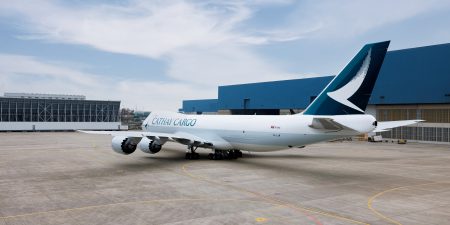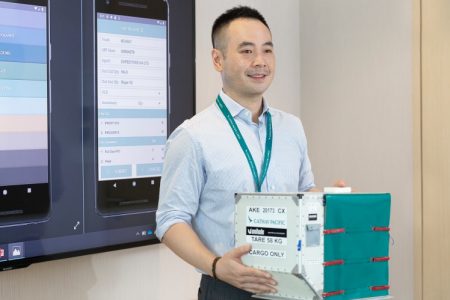The Bluetooth solution provides GPS location, if required, and records temperature, humidity, light and vibration. The idea is not new, as many pharma shippers use data loggers to record such information, but there are issues, Hui said. ‘Many of these loggers have tended to be based around a mobile phone chip to broadcast data in real time. Think of it as a cellular phone that keeps recording GPS location and temperature, that keeps on searching for a cellular network when it travels around the globe and uploading data every 15 minutes or so. This “mobile phone” will not be cheap, and the battery life will not be too long.’
Unlike cellular devices, Bluetooth transmitters are low cost, and their low power means longer battery life – around a year or more, rather than a week for a cellular logger transmitting approximately every 15 minutes. But many agents only download the data for post-shipment journey investigation. ‘That’s when agents contact us if they have detected a temperature excursion, but the shipment has gone and it’s not possible for us to remedy the situation,’ said Hui. ‘We want to offer a more proactive solution.’
Starting in a trial early next year, then rolling out to outports in a phased way from the first half of 2021, Cathay Pacific Cargo will offer a more proactive solution with a Bluetooth tracking device that agents can put into individual shipments. As shipments are delivered to the terminal, they will be tracked, and a dedicated team working 24/7 monitors the sensors from each transmitting device in cargo terminals and will take recovery actions when required. As with the current Ezycargo system or on cathaycargo.com, agents will also get visibility by entering the AWB number.
‘The system will receive data in real time,’ said Hui. ‘If something flashes red, staff will open a service log, while customers will receive an email with a status update. We can get someone to check the shipment conditions, and whatever needs to be done then and there.’
In the cargo terminal, coverage will be supplied by readers, while coverage in the ramp area at the departure and arrival airports will be supplied by a smartphone app. However, the short journey from ramp to terminal to aircraft is out of scope for live coverage, as is the flight itself. Inflight Wi-Fi is not yet universal across the aviation industry, and operational requirements may mean an aircraft with internet connectivity is exchanged for one without.
Even with a proof of concept behind them, there is still work to be done before the first trial and rollout next year, which includes selecting the right hardware supplier. Alex Leung, Cargo Products Manager, said: ‘We are also thinking about the costing model – whether it is a monthly subscription for the service or a one-off shipment cost.’
But the future of an open, accountable and proactive quality of service through technology is drawing near.





